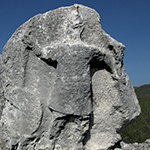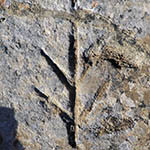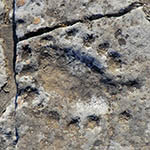A 1125 m di quota, sulla sommità di Costa Palomba, monti Alburni e Parco Nazionale del Cilento, un non comune monumento rupestre domina un ampio panorama a 360°, che spazia dall’entroterra al mare, sino all’isola di Capri nelle giornate più limpide. Si tratta dell’Antéce, secondo alcuni “l’Antico”, un altorilievo rupestre ricavato da un lastrone naturale, un aguzzo spunzone calcareo. La figura umana, a grandezza naturale, impugna con la destra una lancia, o un’insegna, alla quale è poggiato uno scudo rotondo a profilo leggermente spiovente dotato di umbone fusiforme; nell’altra mano impugna un oggetto allungato, eroso e lacunoso, che può fare ipotizzare la presenza di una folgore o di un fascio di folgori (PDF disponibile).
di Andrea ARCÀ, Oriana BOZZARELLI Read more
















